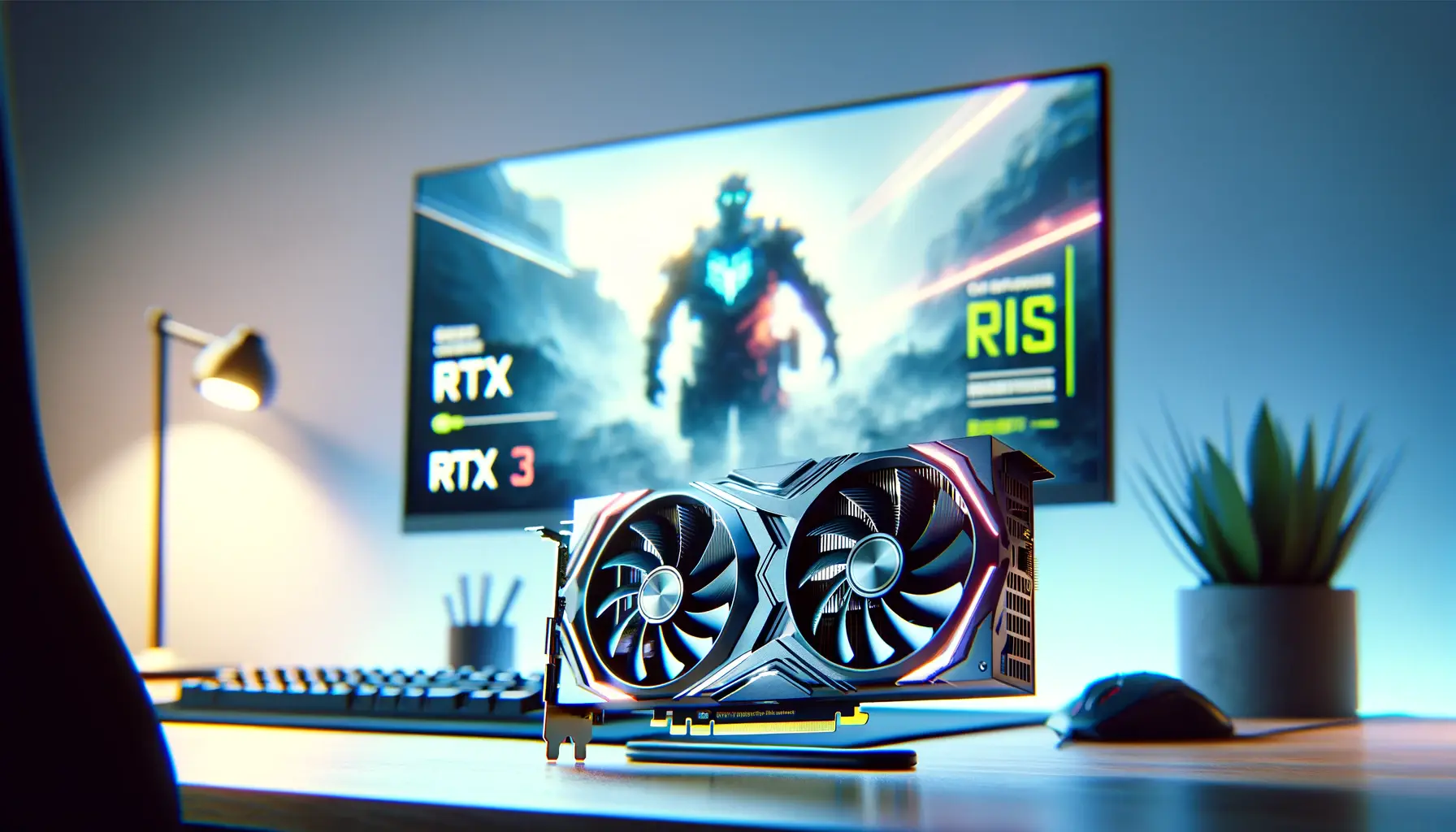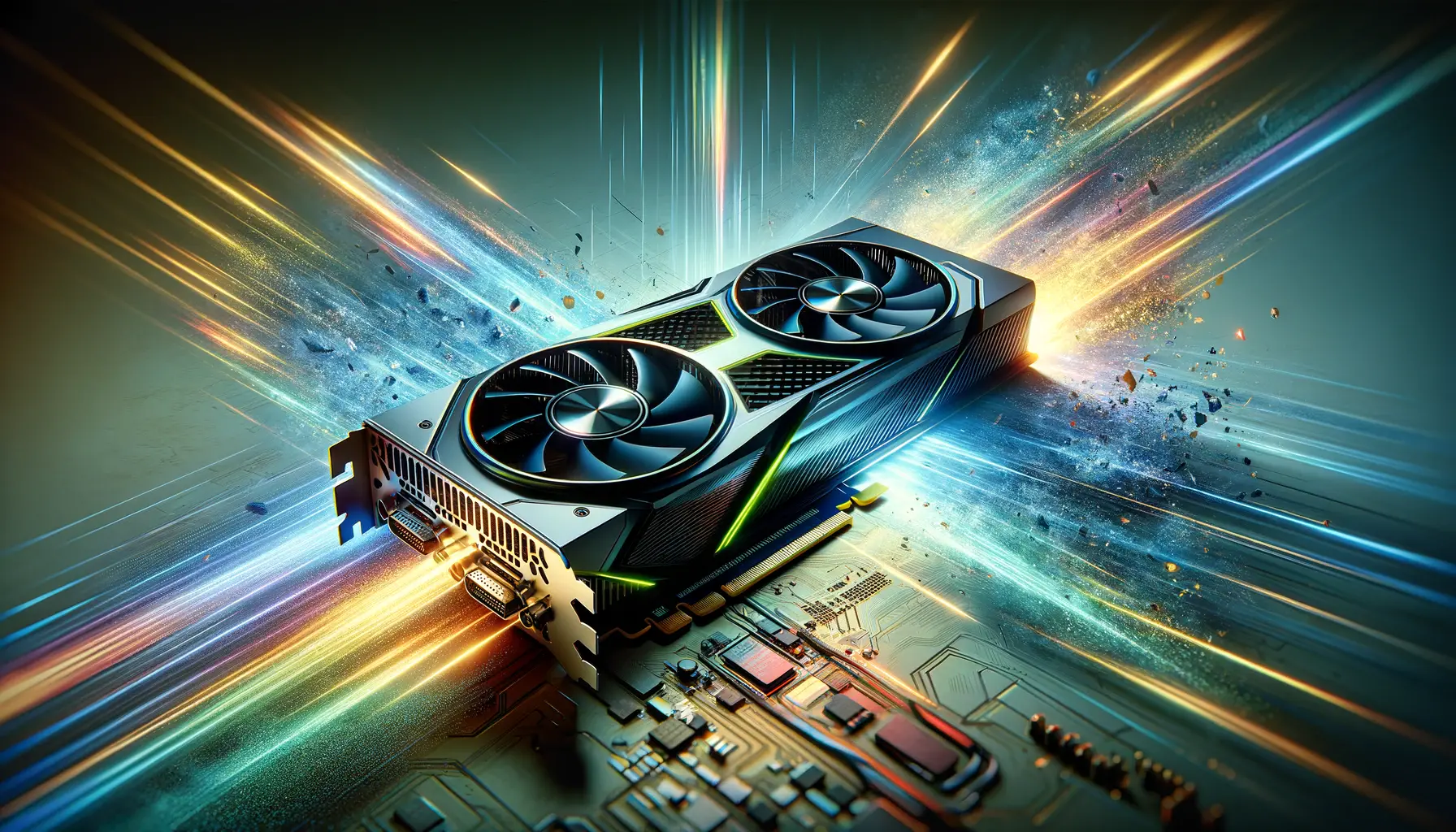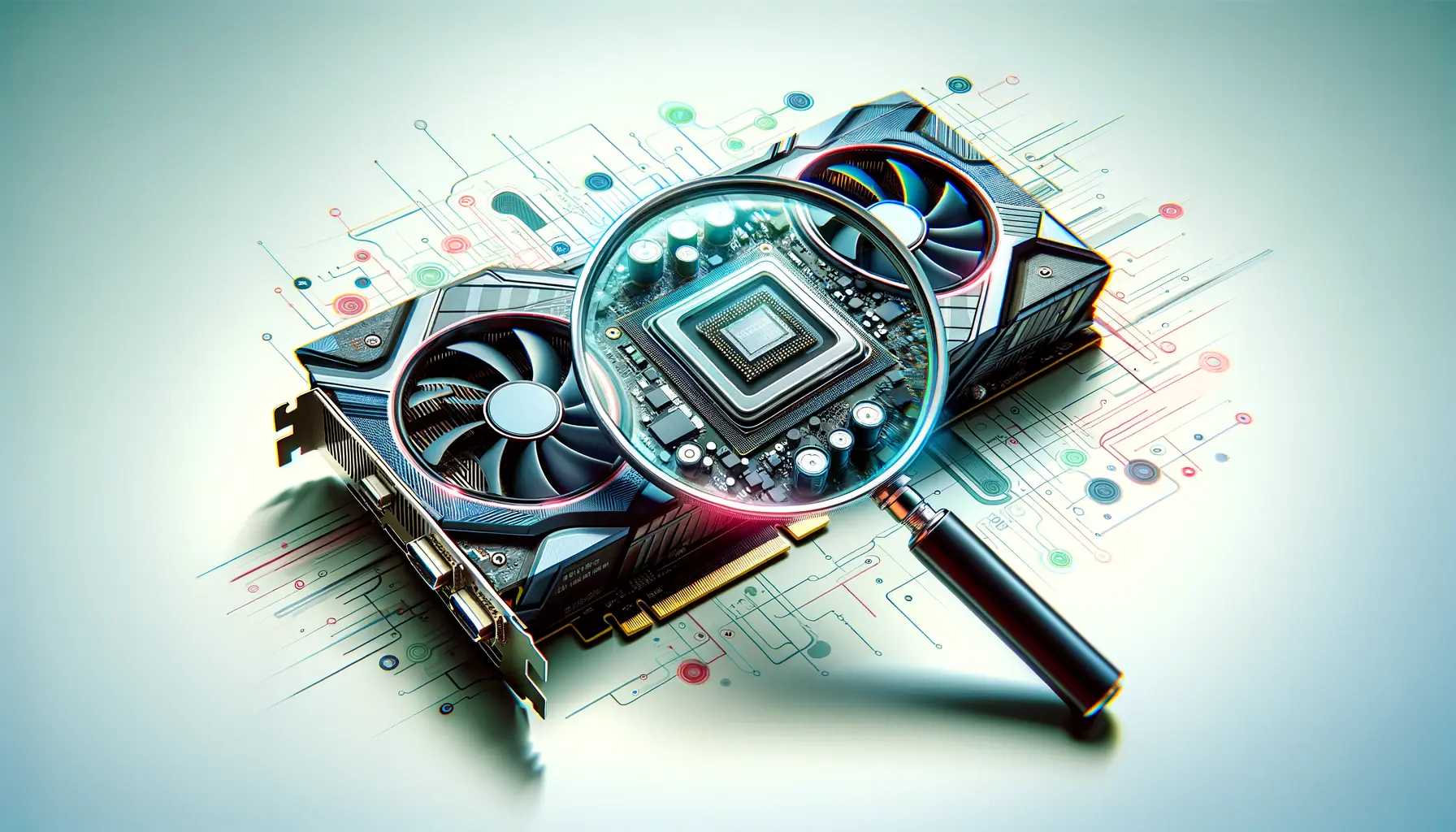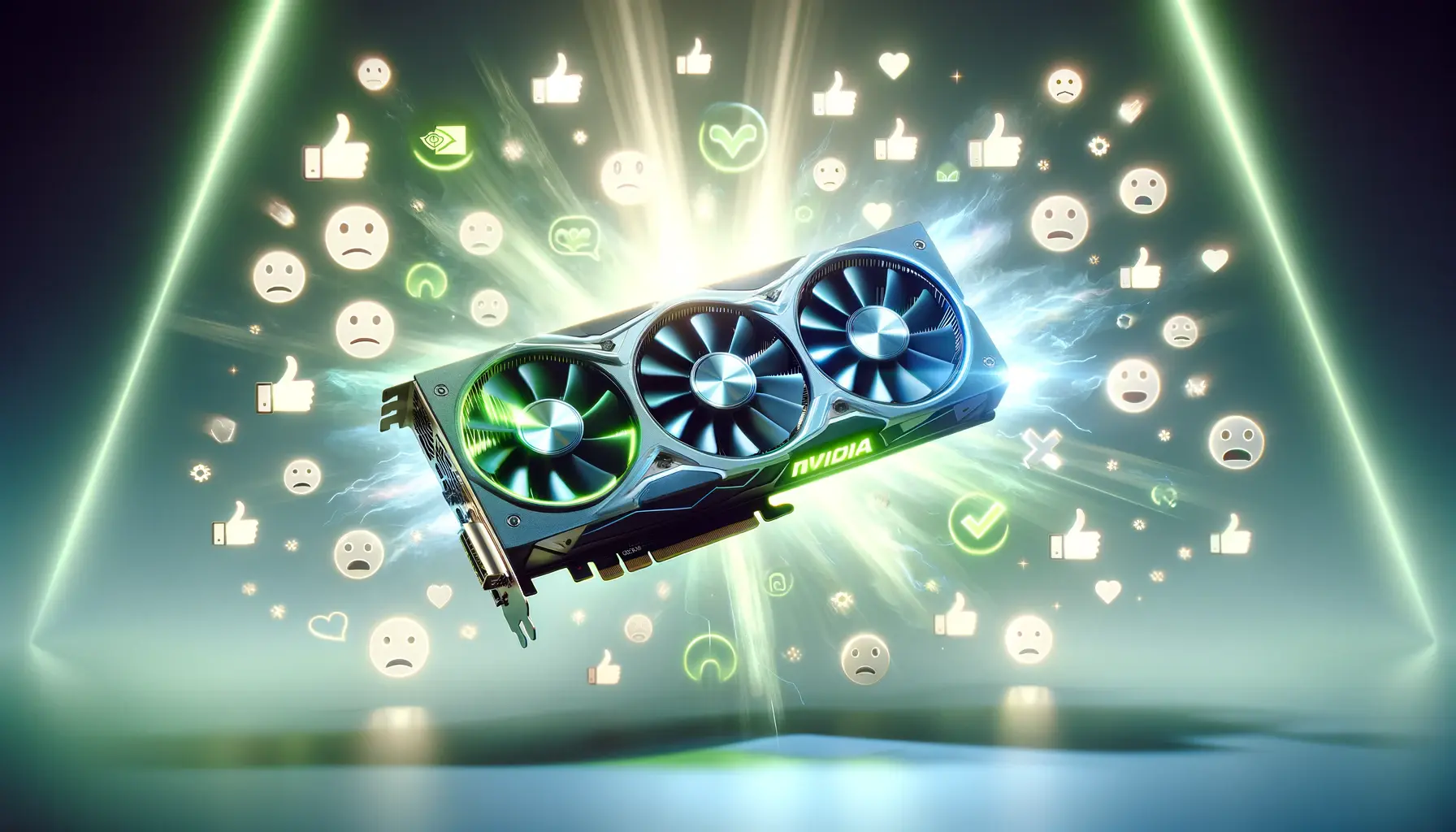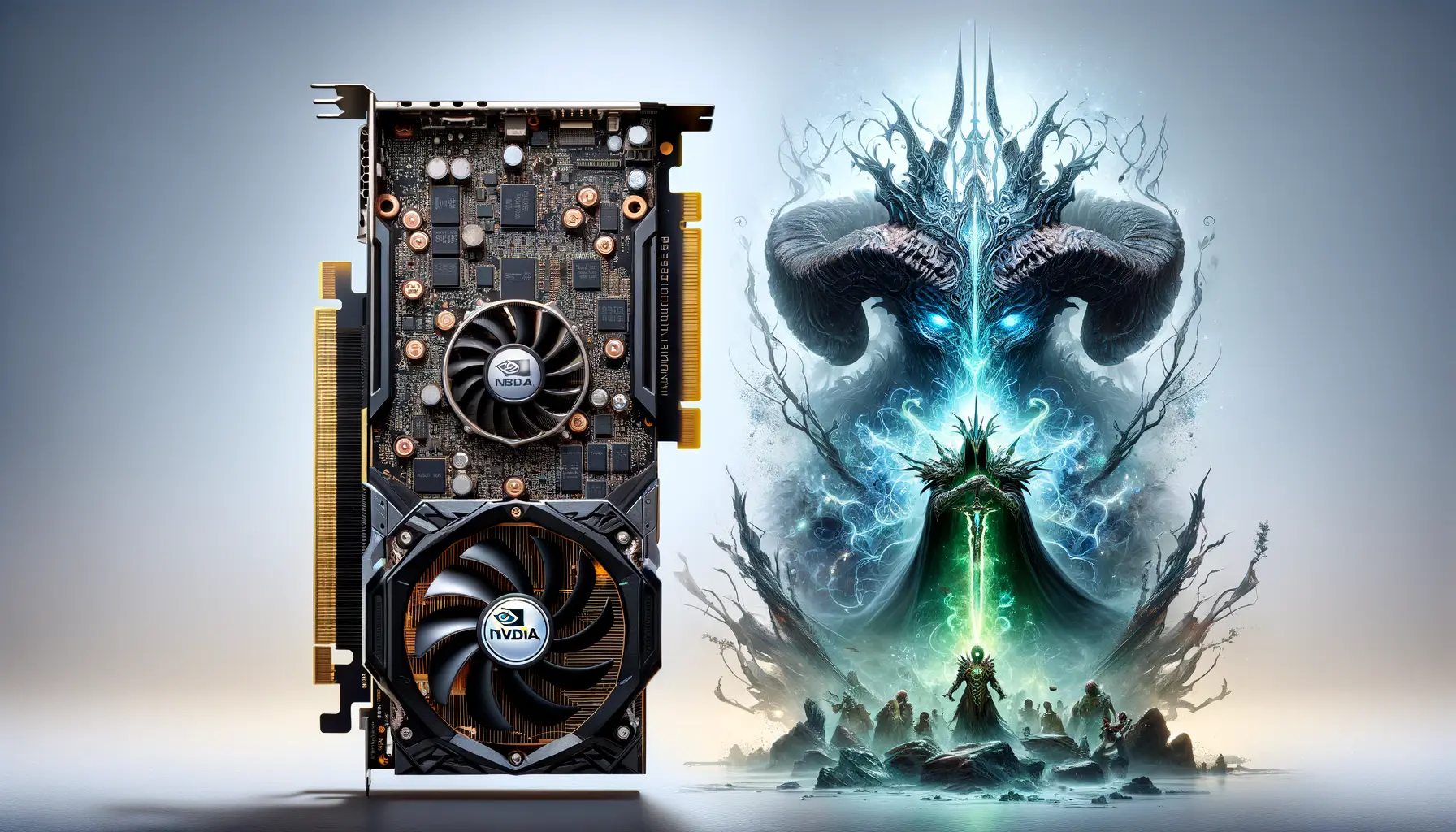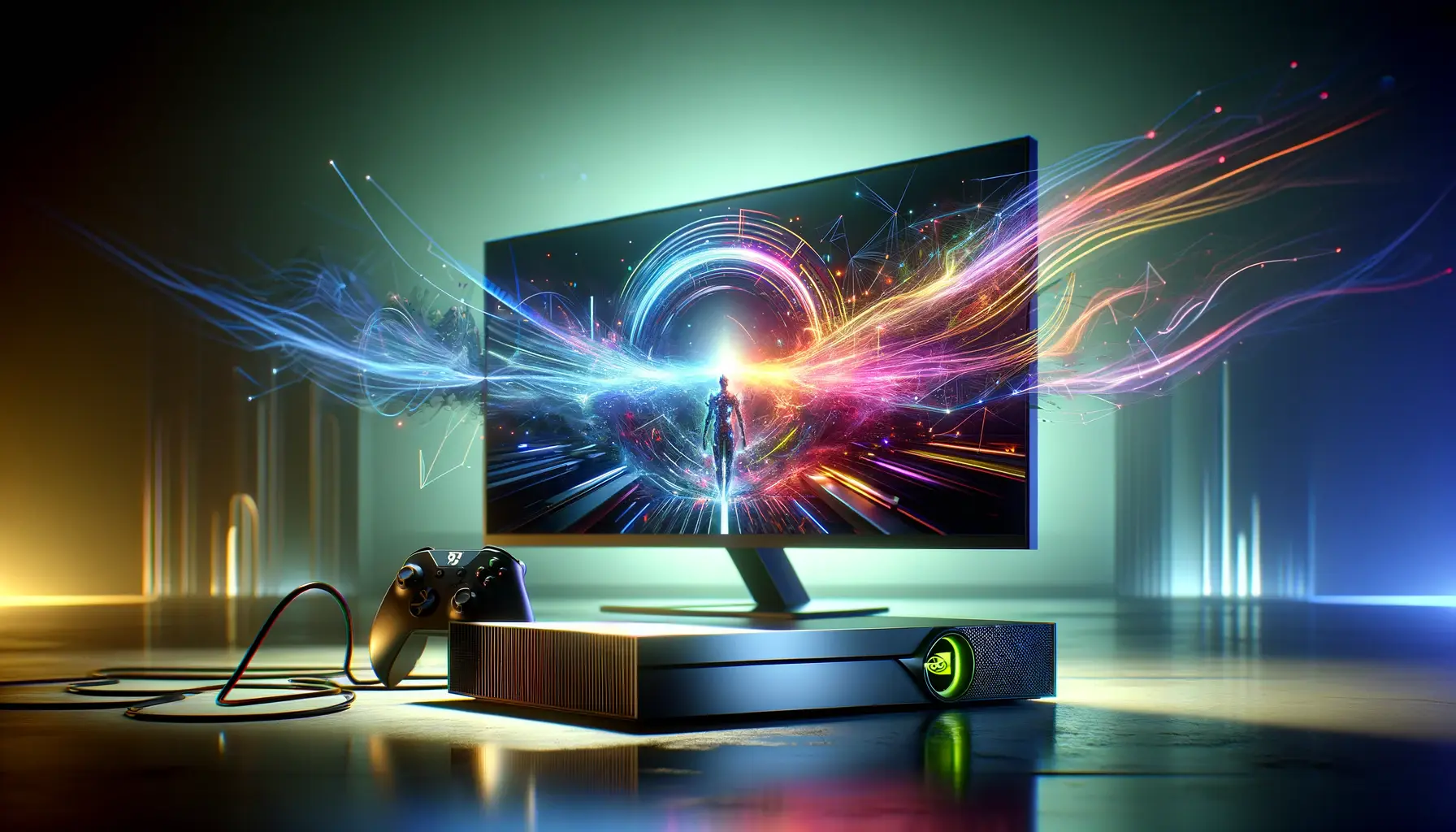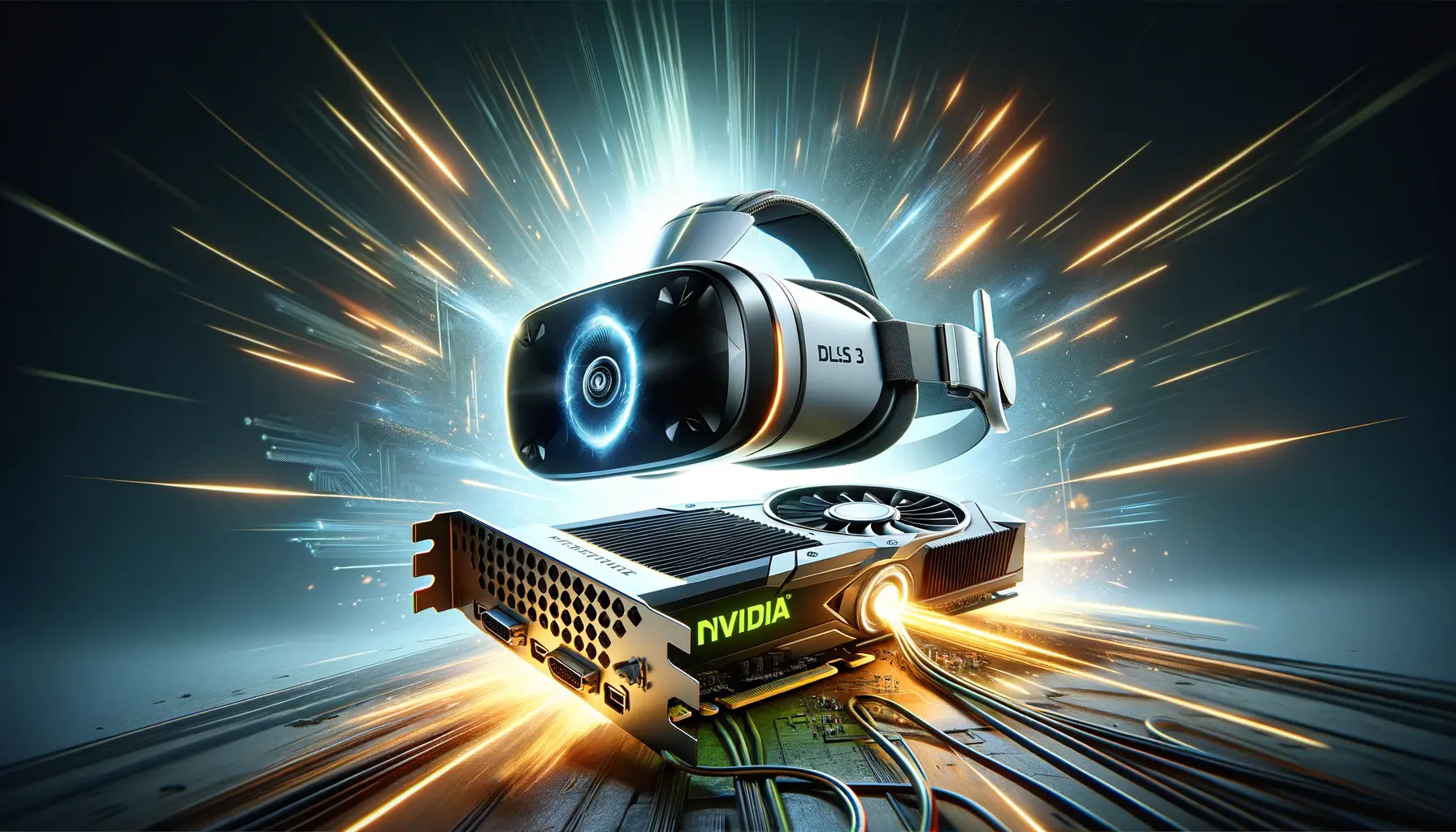Welcome to the cutting-edge world of gaming and graphics technology, where NVIDIA’s Deep Learning Super Sampling (DLSS) 3 stands as a beacon of innovation.
This groundbreaking technology has revolutionized the way we experience games, offering a glimpse into the future of real-time rendering.
By harnessing the power of artificial intelligence and machine learning, DLSS 3 not only enhances image quality but also boosts game performance, making it a critical tool for gamers and developers alike.
In this comprehensive exploration, we delve into the essence of DLSS 3, its impact on gaming, and the benchmarking tools that allow us to quantify its benefits.
As we navigate through the intricacies of this technology, we aim to provide valuable insights into how DLSS 3 is shaping the landscape of digital entertainment and what it means for the future of high-fidelity gaming.
- Understanding DLSS 3 Technology
- The Impact of DLSS 3 on Gaming Performance
- Benchmarking Tools for DLSS 3
- DLSS 3 in Action: Real-World Performance
- Optimizing Games with DLSS 3
- Future Directions of DLSS Technology
- Challenges and Solutions in DLSS Adoption
- Embracing the Future with NVIDIA DLSS 3
- NVIDIA DLSS 3: Frequently Asked Questions
Understanding DLSS 3 Technology
At the heart of NVIDIA’s DLSS 3 lies a sophisticated AI-driven process that redefines the boundaries of gaming performance and visual fidelity.
DLSS, or Deep Learning Super Sampling, utilizes neural networks to intelligently upscale images in real-time, allowing games to run at higher frame rates without compromising on the quality of graphics.
This not only enhances the gaming experience but also provides a smoother, more immersive visual journey for the player.
DLSS 3 takes this a step further by introducing frame generation technology, which, combined with NVIDIA’s Reflex technology, reduces latency and ensures a seamless interaction between the game and the player.
This advancement in DLSS technology represents a significant leap forward, offering unprecedented performance improvements and setting a new standard for what gamers can expect from their hardware.
Key Components of DLSS 3
The magic of DLSS 3 can be attributed to several key components working in harmony.
First and foremost, the AI-powered frame generation technique stands out by creating additional frames, enhancing fluidity and reducing perceived latency.
This is complemented by the DLSS Super Resolution feature, which sharpens and refines the game’s visuals, delivering crisp, high-definition images even when the underlying resolution is lower.
NVIDIA Reflex technology plays a crucial role in minimizing input lag, ensuring that the actions taken by players are reflected on the screen with minimal delay.
This combination of features makes DLSS 3 a powerhouse of performance enhancement, offering a smoother and more responsive gaming experience.
DLSS 3 represents a significant advancement in gaming technology, leveraging AI to enhance both performance and visual quality, setting a new benchmark for what’s possible in real-time rendering.
As we continue to explore the capabilities and implications of DLSS 3, it’s clear that NVIDIA’s innovation is not just about pushing the limits of gaming hardware but also about redefining the gaming experience itself.
The benchmarking tools designed to measure the impact of DLSS 3 provide us with quantifiable data on its effectiveness, offering insights into how this technology is shaping the future of gaming.
The Impact of DLSS 3 on Gaming Performance
The introduction of DLSS 3 has had a profound impact on gaming performance, offering benefits that extend beyond mere frame rate improvements.
By intelligently upscaling images and generating additional frames, DLSS 3 allows games to run at higher resolutions without taxing the GPU, thereby enhancing the overall gaming experience.
Let’s delve into the specific ways DLSS 3 has revolutionized gaming performance.
Enhanced Frame Rates and Smooth Gameplay
One of the most immediate benefits of DLSS 3 is the significant boost in frame rates.
This improvement in performance means that games can run smoother than ever before, even on hardware that previously struggled with high-resolution settings.
The impact on gameplay is twofold:
- Increased Fluidity: Higher frame rates translate to smoother motion, making fast-paced action and intricate visual details come to life.
- Reduced Latency: With the integration of NVIDIA Reflex, DLSS 3 also helps in reducing input lag, ensuring that player inputs are more accurately reflected on the screen in real-time.
Superior Image Quality
DLSS 3’s super-resolution capabilities ensure that the visual quality of games is not sacrificed for performance.
This technology achieves a delicate balance between sharpness and performance by:
- Upscaling Lower Resolutions: DLSS 3 can take a lower native resolution and upscale it, producing images that look as good as, if not better than, their native high-resolution counterparts.
- Enhancing Textures and Details: The AI algorithms in DLSS 3 are capable of adding detail to textures and game elements, making them appear more refined and realistic.
Broader Accessibility
By significantly lowering the hardware requirements for running games at high settings, DLSS 3 makes cutting-edge gaming accessible to a wider audience.
This democratization of high-performance gaming is achieved through:
- Lower GPU Load: DLSS 3 allows gamers to experience advanced graphics without needing the latest and most expensive hardware.
- Energy Efficiency: With reduced strain on the GPU, DLSS 3 also contributes to lower power consumption, making gaming more environmentally friendly and cost-effective in the long run.
The transformative impact of DLSS 3 on gaming performance is undeniable. By offering smoother gameplay, superior image quality, and broader accessibility, DLSS 3 is setting new standards for what gamers can expect from their gaming experiences.
In summary, the advent of DLSS 3 technology has ushered in a new era of gaming performance, where high frame rates and stunning visual fidelity are no longer mutually exclusive.
As we continue to explore the capabilities of DLSS 3, it’s clear that its impact on the gaming industry will be felt for years to come.
Benchmarking Tools for DLSS 3
Understanding the full impact of DLSS 3 on gaming performance requires the use of sophisticated benchmarking tools.
These tools are designed to provide quantitative data on how DLSS 3 enhances game performance and image quality.
Let’s explore some of the key benchmarking tools and metrics used to evaluate the effectiveness of DLSS 3.
3DMark and DLSS Feature Tests
3DMark is one of the most widely recognized benchmarking tools in the gaming community.
It offers a range of tests that measure the performance and capabilities of graphics cards, including specific tests for DLSS:
- Port Royal: This test is designed to evaluate real-time ray tracing performance, and with the introduction of DLSS 3, it now includes options to test DLSS Frame Generation and Super Resolution, providing a clear picture of how DLSS 3 can enhance ray-traced games.
- DLSS Feature Test: This standalone test specifically measures the performance impact of DLSS 3 by comparing frame rates and image quality with DLSS enabled and disabled, offering a direct assessment of DLSS 3’s effectiveness.
Frame Rate Counters and In-Game Benchmarks
Many games now include built-in benchmarking tools that allow players to measure performance directly within the game environment.
These tools often display frame rate counters and other relevant metrics, such as frame time and GPU utilization, providing insights into how DLSS 3 affects gameplay:
- In-Game Benchmarks: Games like “Cyberpunk 2077” and “Control” feature their own benchmarking sequences that can be run with DLSS 3 enabled, allowing players to see firsthand the performance gains and visual enhancements provided by DLSS 3.
- Third-Party Software: Tools like FRAPS and MSI Afterburner can be used alongside games to track frame rates and other performance metrics in real-time, offering an additional layer of data for analyzing the impact of DLSS 3.
Visual Quality Assessment Tools
While frame rates and performance metrics are crucial, assessing the visual quality improvements brought by DLSS 3 is equally important.
Tools and methodologies for visual quality assessment include:
- Image Comparison Software: Software solutions that allow for side-by-side comparisons of screenshots taken with and without DLSS 3 enabled can help highlight the enhancements in image quality and detail.
- User-Reported Feedback: Community forums and reviews often provide valuable insights into the subjective experience of gaming with DLSS 3, including perceived improvements in image sharpness and detail.
Benchmarking DLSS 3 requires a combination of performance measurement tools and visual quality assessment methodologies to fully understand its impact on gaming experiences.
In conclusion, benchmarking tools play a vital role in quantifying the benefits of DLSS 3, offering both developers and gamers a way to measure and understand the technology’s impact on performance and visual quality.
As DLSS 3 continues to evolve, these tools will remain essential for evaluating and optimizing the gaming experience.
DLSS 3 in Action: Real-World Performance
The true test of NVIDIA’s DLSS 3 technology lies in its application within actual gaming environments.
By examining real-world performance across various titles, we can gain insights into how DLSS 3 transforms the gaming experience.
This section highlights case studies and examples of DLSS 3’s impact on popular games.
Case Study: Cyberpunk 2077
Cyberpunk 2077, with its dense urban environments and complex lighting, serves as an ideal benchmark for DLSS 3’s capabilities.
Upon enabling DLSS 3, players reported:
- Significant Frame Rate Improvements: Gamers experienced a dramatic increase in frame rates, with some reporting up to a 2x boost in performance, making the game playable at higher resolutions without compromising on smooth gameplay.
- Enhanced Visual Fidelity: Despite the upscaling, users noted an improvement in image quality, with sharper textures and more detailed environments, thanks to DLSS 3’s super-resolution and frame generation technologies.
Impact on Competitive Gaming: Fortnite
In the fast-paced world of competitive gaming, every frame and millisecond of response time counts.
Fortnite, one of the most popular competitive games, saw notable benefits from DLSS 3:
- Reduced Input Lag: The integration of NVIDIA Reflex with DLSS 3 helped in minimizing input lag, providing a competitive edge to players by allowing for quicker reactions and more precise movements.
- Fluid Gameplay: The frame generation feature of DLSS 3 ensured a smoother gameplay experience, even during intense battles, by maintaining high frame rates without sacrificing visual quality.
Exploring New Worlds: No Man’s Sky
No Man’s Sky’s vast, procedurally generated universes demand high performance for exploration and discovery.
DLSS 3’s implementation brought forth:
- Seamless Exploration: Players exploring the infinite cosmos of No Man’s Sky enjoyed smoother transitions between planets and in-flight sequences, thanks to the higher frame rates enabled by DLSS 3.
- Visual Enhancements: The game’s already stunning visuals received a further boost, with more detailed planetary surfaces and improved lighting effects, enhancing the overall sense of immersion.
DLSS 3’s real-world applications across various gaming genres demonstrate its versatility and effectiveness in enhancing both performance and visual quality, making it a game-changer in the industry.
Through these case studies, it’s evident that DLSS 3 is not just a theoretical advancement but a practical tool that significantly enhances the gaming experience.
Whether it’s through boosting frame rates in visually intensive titles, reducing input lag in competitive games, or improving visual fidelity in expansive open-world adventures, DLSS 3 has proven its value to gamers worldwide.
Optimizing Games with DLSS 3
Integrating DLSS 3 into games is not just about flipping a switch.
It requires careful optimization to ensure that gamers can fully benefit from the technology’s potential.
This process involves collaboration between NVIDIA and game developers, fine-tuning various aspects of the game’s graphics and performance settings to achieve the best balance between image quality and frame rate.
Let’s explore the steps and considerations involved in optimizing games with DLSS 3.
Developer Collaboration and Support
At the core of DLSS 3 optimization is the partnership between NVIDIA and game developers.
NVIDIA provides extensive support and resources to developers, including:
- SDKs and APIs: NVIDIA offers software development kits (SDKs) and application programming interfaces (APIs) that allow developers to integrate DLSS 3 into their games efficiently.
- Technical Assistance: NVIDIA’s team of engineers works closely with developers to troubleshoot issues and optimize DLSS 3’s performance for each specific game, ensuring a seamless gaming experience.
Customization and Fine-Tuning
Every game is unique, with its own set of graphical and performance characteristics.
Optimizing a game with DLSS 3 involves:
- Adjusting DLSS Settings: Developers can customize various DLSS 3 parameters, such as the balance between performance and image quality, to suit their game’s specific needs.
- Performance Testing: Rigorous testing is conducted to identify the optimal DLSS 3 settings for each game, ensuring that players receive the best possible experience.
User Customization Options
While developers play a crucial role in optimizing DLSS 3, giving players the ability to adjust DLSS settings is equally important.
This empowers gamers to:
- Personalize Their Experience: Players can tweak DLSS 3 settings within the game’s options menu, allowing them to find the perfect balance between performance and visual quality based on their preferences and hardware capabilities.
- Adapt to Different Scenarios: Depending on the game’s demands, players might choose to prioritize image quality in visually stunning scenes or opt for higher performance during fast-paced action sequences.
Optimizing games with DLSS 3 is a collaborative effort that involves both developers and gamers. By fine-tuning the technology to meet the unique demands of each game, DLSS 3 can unlock new levels of performance and visual fidelity.
In conclusion, the optimization of games with DLSS 3 is a meticulous process that ensures gamers can enjoy the full benefits of this revolutionary technology.
Through developer collaboration, customization, and fine-tuning, DLSS 3 is set to redefine the standards of gaming performance and visual quality.
Future Directions of DLSS Technology
The evolution of NVIDIA’s DLSS technology has been nothing short of revolutionary, with DLSS 3 marking the latest milestone in its development.
However, the journey doesn’t end here.
The future of DLSS technology promises even more exciting advancements that will continue to transform the gaming landscape.
Let’s explore the potential future directions of DLSS technology and what they could mean for gamers and developers alike.
AI and Machine Learning Innovations
At the heart of DLSS technology lies advanced AI and machine learning algorithms.
Future iterations of DLSS could leverage even more sophisticated AI models to:
- Improve Image Quality: By training on a broader range of game scenes and textures, future DLSS versions could offer even more refined and realistic visuals, reducing artifacts and enhancing detail even further.
- Enhance Performance Efficiency: New AI techniques could optimize the way frames are generated and upscaled, leading to even higher frame rates without increasing hardware demands.
Broader Application and Accessibility
As DLSS technology continues to evolve, its application could extend beyond traditional gaming.
Future directions might include:
- Virtual Reality (VR) and Augmented Reality (AR): DLSS could play a crucial role in improving the performance and visual quality of VR and AR experiences, making them more immersive and accessible.
- Content Creation and Professional Visualization: DLSS technology could be adapted for use in professional 3D rendering and video production, significantly reducing rendering times while maintaining high visual fidelity.
Integration with Cloud Gaming and Streaming Services
The rise of cloud gaming and game streaming services presents another exciting avenue for DLSS technology.
Future developments could see DLSS:
- Reducing Bandwidth Requirements: By rendering games at lower resolutions and using DLSS to upscale them, streaming services could deliver high-quality gaming experiences with lower bandwidth consumption.
- Improving Cloud Gaming Performance: DLSS could enhance the performance of games streamed from the cloud, ensuring smooth gameplay even on less powerful devices.
The future of DLSS technology is brimming with potential, from groundbreaking AI advancements to new applications in VR, AR, and cloud gaming. As NVIDIA continues to innovate, DLSS is set to redefine the boundaries of gaming and digital experiences.
In summary, the trajectory of DLSS technology points towards a future where gaming is not only more visually stunning and performant but also more accessible and immersive.
With each new development, DLSS promises to unlock new possibilities for gamers, developers, and beyond, shaping the future of digital entertainment.
Challenges and Solutions in DLSS Adoption
While NVIDIA’s DLSS technology has significantly advanced gaming experiences, its adoption is not without challenges.
Understanding these hurdles and the solutions being implemented is crucial for both gamers and developers.
This exploration sheds light on the obstacles faced in DLSS adoption and the innovative approaches to overcome them.
Hardware Compatibility and Requirements
One of the primary challenges in adopting DLSS technology is its hardware requirements.
Initially, DLSS was exclusive to NVIDIA’s RTX series of graphics cards, limiting its availability to a subset of gamers:
- Expanding Hardware Support: NVIDIA has been working to broaden DLSS compatibility, including introducing features like DLSS 2’s improved efficiency and performance across a wider range of RTX cards.
- Optimizing Performance Across Generations: Continuous improvements and optimizations ensure that even older RTX cards can benefit from DLSS, making high-quality gaming more accessible.
Developer Integration Efforts
Integrating DLSS into games requires effort from developers, which can be a barrier to its widespread adoption:
- Simplifying Integration: NVIDIA provides extensive support to developers, including SDKs, APIs, and direct assistance, to streamline the process of integrating DLSS into games.
- Community and Indie Developer Support: NVIDIA has also focused on making DLSS accessible to smaller studios and indie developers, ensuring that games of all scales can benefit from DLSS technology.
Consumer Awareness and Perception
Another challenge is ensuring that gamers are aware of DLSS and understand its benefits:
- Educational Initiatives: NVIDIA and its partners have invested in educational content, tutorials, and marketing campaigns to highlight the advantages of DLSS and how it enhances gaming experiences.
- Community Engagement: Engaging with the gaming community through forums, social media, and events helps to address misconceptions and provide clear, accessible information about DLSS.
Future-Proofing and Scalability
As gaming technology continues to evolve, ensuring that DLSS remains relevant and effective is crucial:
- Ongoing Research and Development: NVIDIA’s commitment to continuous research and development ensures that DLSS technology evolves in line with new gaming trends and hardware advancements.
- Adapting to New Gaming Paradigms: DLSS is being designed to be flexible and scalable, capable of adapting to future gaming technologies such as cloud gaming, VR, and more.
The challenges in DLSS adoption are significant, but through innovative solutions, dedicated support, and continuous improvement, NVIDIA is paving the way for DLSS to become a cornerstone of modern gaming experiences.
In conclusion, the path to widespread DLSS adoption is paved with challenges, from hardware compatibility to developer integration and consumer awareness.
However, the concerted efforts of NVIDIA and the gaming community are addressing these obstacles, ensuring that DLSS continues to revolutionize gaming experiences for all.
Embracing the Future with NVIDIA DLSS 3
The journey through the realms of NVIDIA DLSS 3 technology reveals a landscape where gaming is not just an activity but an ever-evolving experience, shaped by the relentless pursuit of perfection in performance and visual quality.
As we stand on the brink of new digital horizons, DLSS 3 emerges as a beacon of innovation, guiding the way towards a future where the boundaries between reality and virtuality blur.
The Vanguard of Gaming Evolution
DLSS 3, with its deep learning and AI-driven capabilities, represents more than just a technological advancement; it is a testament to NVIDIA’s commitment to redefining the gaming experience.
By offering unprecedented improvements in frame rates and image quality, DLSS 3 sets a new standard for what gamers can expect, making it an indispensable tool for both developers and players alike.
Challenges Transformed into Opportunities
The path to widespread adoption of DLSS 3 is fraught with challenges, from hardware compatibility to the need for greater consumer awareness.
However, these challenges are being met with innovative solutions and a community-driven approach that seeks to educate, engage, and excite.
Through collaboration and continuous improvement, DLSS 3 is not just overcoming these hurdles but is also paving the way for future advancements in gaming technology.
A Future Crafted by Collaboration
The future of DLSS technology is a canvas awaiting the brushstrokes of NVIDIA’s innovation, shaped by the feedback and creativity of the gaming community.
As we look ahead, the potential applications of DLSS extend beyond gaming, promising to revolutionize fields such as virtual reality, augmented reality, and cloud gaming.
This future, bright with possibility, is being built on the foundation of DLSS 3, promising an even more immersive and accessible digital world.
- Enhanced Realism: The continuous evolution of DLSS technology promises to bring us closer to photorealistic graphics, making games more lifelike and immersive.
- Greater Accessibility: By optimizing performance across a wider range of hardware, DLSS 3 aims to make high-quality gaming experiences accessible to a broader audience.
- Innovative Applications: The potential of DLSS technology extends into new realms, including VR and AR, where it can significantly enhance visual fidelity and performance.
In conclusion, NVIDIA DLSS 3 is not just a milestone in gaming technology; it is a harbinger of a future where games are indistinguishable from reality, and where every detail is rendered with breathtaking clarity.
As NVIDIA continues to innovate and push the boundaries of what’s possible, DLSS 3 stands as a testament to the transformative power of technology, inviting us all to embrace the future of gaming.
NVIDIA DLSS 3: Frequently Asked Questions
As NVIDIA DLSS 3 continues to shape the future of gaming, many gamers and enthusiasts have questions about its capabilities, requirements, and impact. Here are answers to some of the most frequently asked questions about NVIDIA DLSS 3.
DLSS 3 requires compatible hardware, specifically the GeForce RTX 40 Series GPUs, limiting its availability to users with the latest NVIDIA technology.
NVIDIA DLSS 3 enhances gaming performance and visual quality by using AI to upscale images and generate additional frames, improving both frame rates and image sharpness.
DLSS 3 can be activated from the graphics or video settings menu within supported games, provided you have a compatible NVIDIA RTX 40 Series GPU.
Yes, DLSS 3’s advanced features, including frame generation, are exclusive to NVIDIA GeForce RTX 40 Series GPUs due to their specific hardware capabilities.
Yes, DLSS 3 has the potential to significantly enhance VR gaming by improving frame rates and visual fidelity, making VR experiences more immersive.
DLSS 3 works with a growing list of supported games. Developers must integrate DLSS 3 into their games for the technology to be available to players.
DLSS 3 significantly boosts gaming performance by increasing frame rates while also enhancing image quality, providing a smoother and more visually appealing gaming experience.
No, DLSS 3’s frame generation feature is not supported on RTX 30 series GPUs. It requires the architecture of the RTX 40 series for full functionality.


